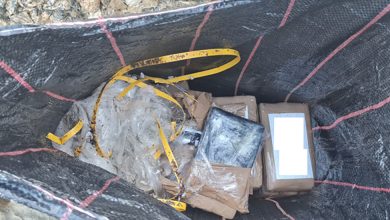The Empty Promise of Endless Steak

It is a gleaming vision of a world just beyond the present: a world in which meat is abundant and affordable with almost no cost to the environment. Animal slaughter is forgotten. Global warming is restrained. At the heart of the vision is a high-tech factory housing steel tanks as tall as apartment buildings and conveyor belts rolling out fully formed steaks, millions of pounds a day — enough, astonishingly, to feed an entire nation.
Meat without killing is the central promise of what’s come to be known as cultivated meat. This isn’t a new plant-based alternative. It is, at least in theory, a few animal cells, nurtured with the right nutrients and hormones, finished with sophisticated processing techniques, and voilà: juicy burgers and seared tuna and marinated lamb chops without the side of existential worry.
It’s a vision of hedonism — but altruism, too. A way to save water, free up vast tracts of land, drastically cut planet-warming emissions, protect vulnerable species. It’s an escape hatch for humankind’s excesses. All we have to do is tie on our bibs.
Between 2016 and 2022, investors poured almost $3 billion into cultivated meat and seafood companies. Powerful venture capital and sovereign wealth funds — SoftBank, Temasek, the Qatar Investment Authority — wanted in. So did major meatpackers like Tyson, Cargill and JBS, and celebrities like Leonardo DiCaprio, Bill Gates and Richard Branson. Two of the leading companies — Eat Just and Upside Foods, both startups — reportedly achieved billion-dollar valuations. And today, a few products that include cultivated cells have been approved for sale in Singapore, the United States and Israel.
Yet despite nearly a decade of work and a great many messianic pronouncements, it is increasingly clear that a broader cultivated meat revolution was never a real prospect, and definitely not within the few years we have left to avert climate catastrophe.
Interviews with almost 60 industry investors and insiders, including many who have been employed by or been part of the leadership teams of these companies, reveal a litany of squandered resources, broken promises and unproven science. Founders, hemmed in by their own unrealistic proclamations, cut corners, such as using ingredients derived from slaughtered animals. Investors, swept up in the excitement of the moment, wrote check after check despite significant technological obstacles. Costs refused to enter the realm of plausible as launch targets came and went. All the while, nobody could achieve anything close to meaningful scale. And yet companies rushed to build expensive facilities and pushed scientists to exceed what was possible, creating the illusion of a thrilling race to market.
We are having trouble retrieving the article content.
Please enable JavaScript in your browser settings.
Thank you for your patience while we verify access. If you are in Reader mode please exit and log into your Times account, or subscribe for all of The Times.
Thank you for your patience while we verify access.
Already a subscriber? Log in.
Want all of The Times? Subscribe.



